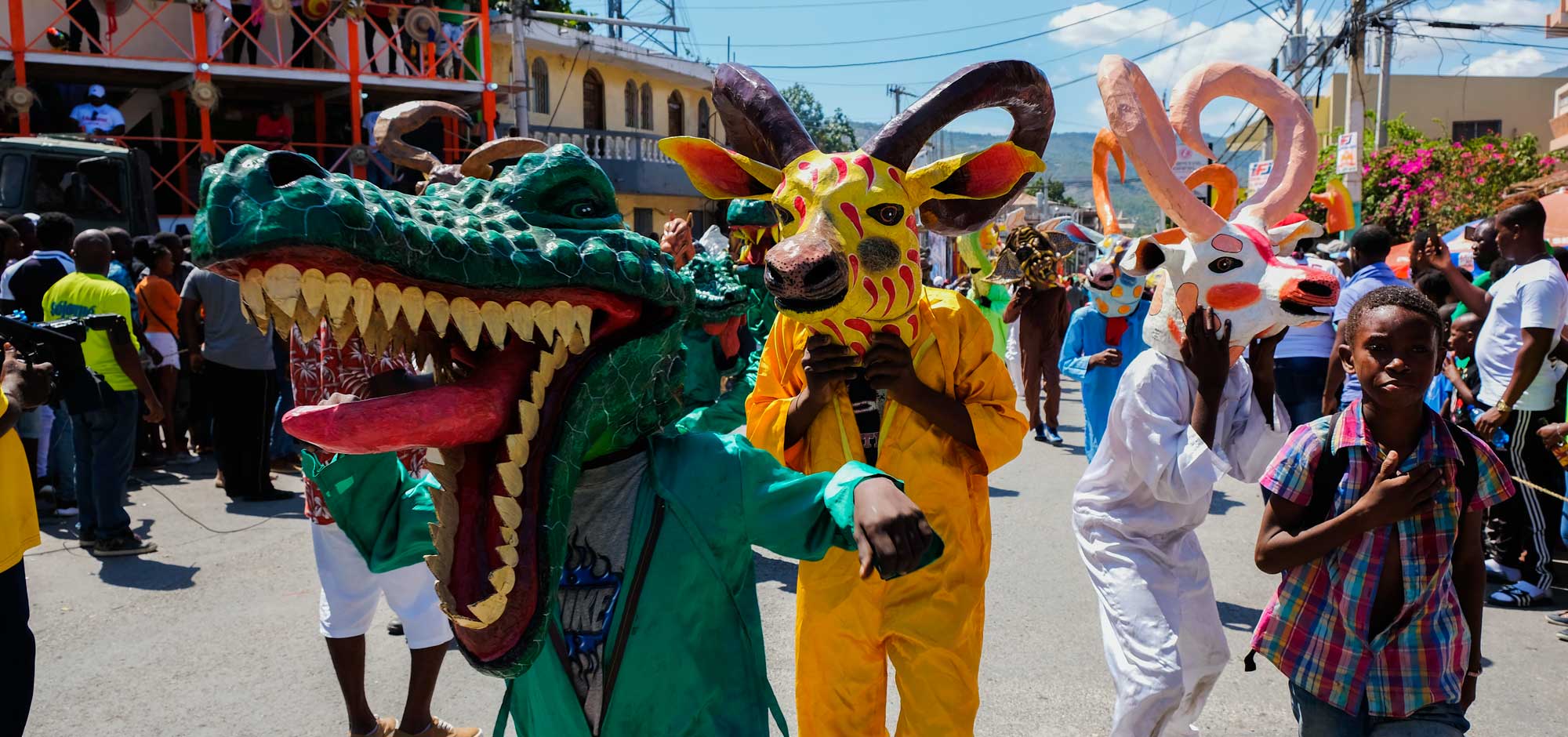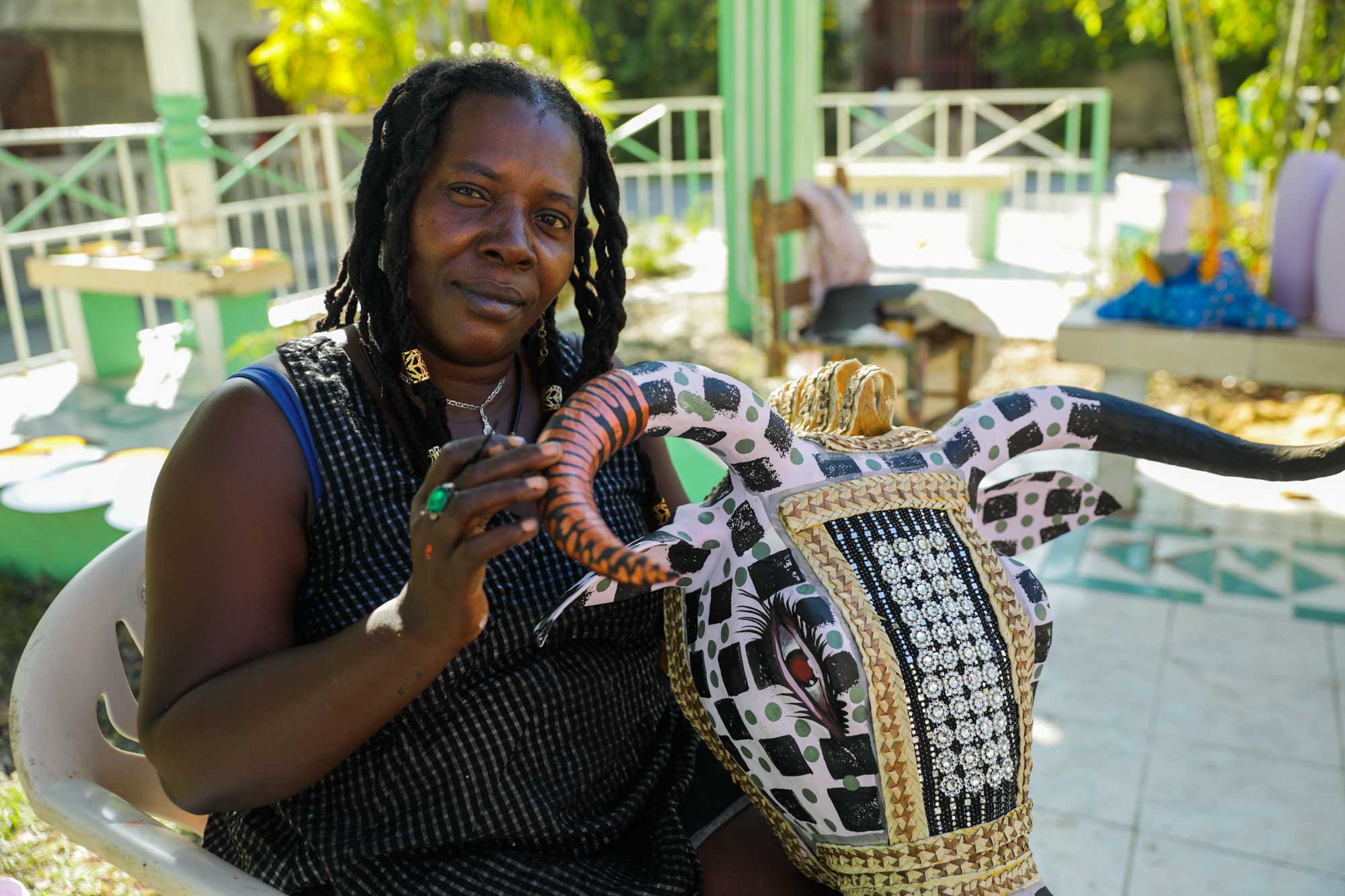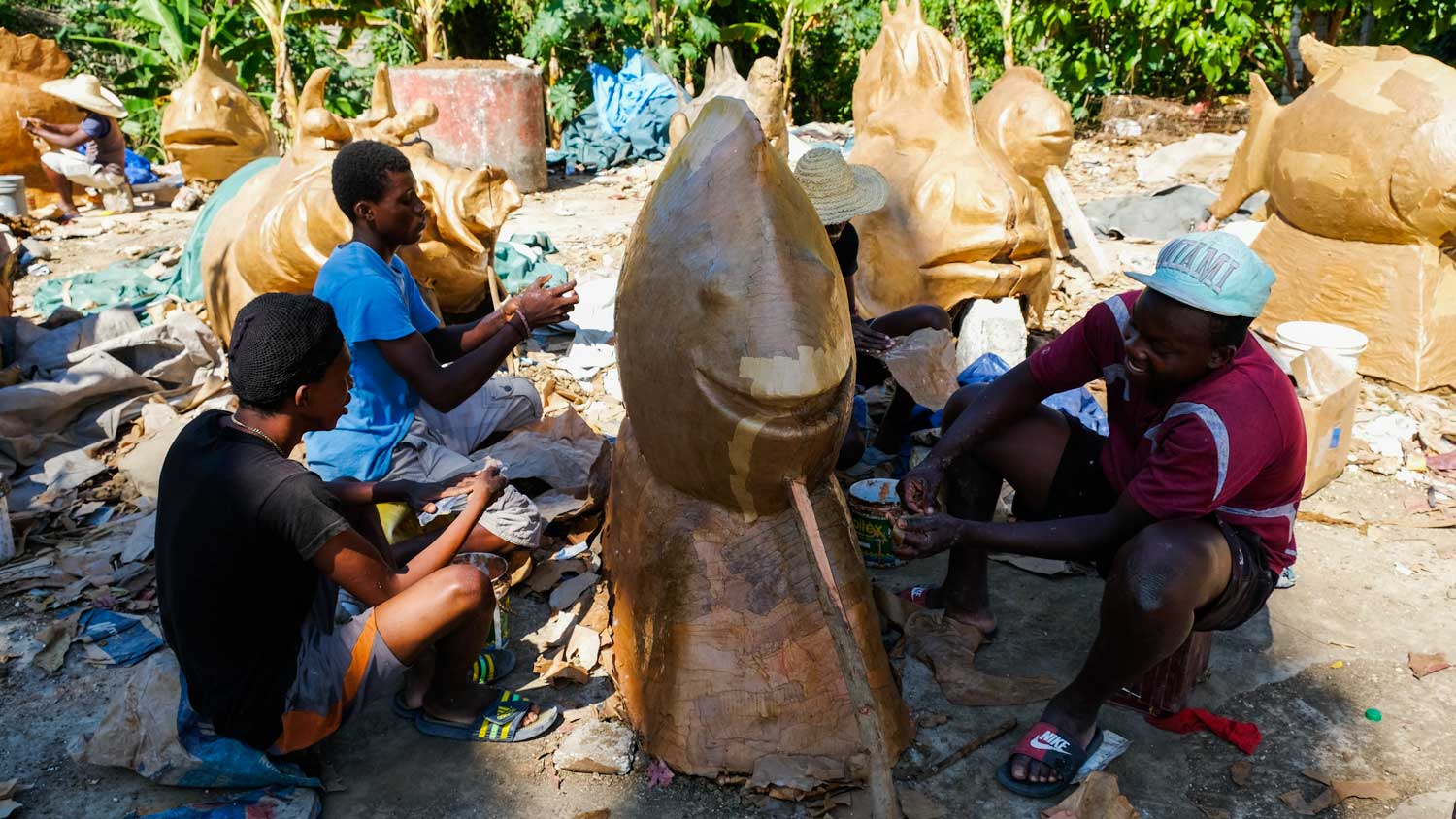
Photo: Franck Fontain
Uncover the Haitian Craft of Paper Mâché
On a small square at the end of the Rue Sainte Anne, a woman holds a paper mâché bull’s head in her left hand and a brush in her right. This is Charlotte…
It is two o’clock in the afternoon, in the chief town of Haiti’s southeastern department – Jacmel. On a small square at the end of the Rue Sainte Anne, a woman with locks down to her shoulders holds a paper mache bull’s head in her left hand and a brush in her right. This is Charlotte, one of the most popular artists of the city.
The paper mâché technique, she explains, is very old. It comes from Asia. ‘With the carnival tradition inherited from Europeans, we have found the perfect pretext to improve this ancestral art, to make it a representation of the Haitian culture already rich in color.’
A few steps from where we are stands a fresco of glass of all colors. We can read the words “Fanm se poto mitan”. The artist to whom we owe this work? Charlotte. In her studio, two plaques of honor and merit salute her work. The walls and shelves are adorned with mâché roosters, oxen, cows, and objects of everyday life: a jewelry box next to a trivet, in front of a painting.
‘Haitian culture,’ Charlotte continues, ‘that’s what we artists put into it. It is not static and it is this dynamism from which it draws all its charm.’

Photo: Mikkel Ulriksen
“Work begins a whole year before the carnival”
The art of paper mâché is to mold shapes into paper hardened beforehand with a heated starch preparation. This technique, taught at the National School of Arts, is known throughout Haiti, but it has found its greatest success here in Jacmel.
The carnival held every year in the city (around Easter) attests to the success of this practice.Transmitted from generation to generation, the technique remains the same even though artists are free to experiment with size, shape and color. Masks, decoration of all kinds, aquatic fauna, political personalities, fictional characters – everything goes. In 1993, to illustrate a debate on deforestation, Soliosso Simonis disguised himself by transforming into a mango tree made of paper mâché. Around here, you could find a life-size zebra, painted bright red, right next to a representation of Fidel Castro.
Rivaling Haiti’s national carnival, the Jacmel Carnaval draws bigger crowds every year, partly because of the paper mâché art on display. Work begins a whole year before the carnival, designing the masks that will be on show on the front of the stands, on parade floats, and not least of all in the parade itself.

Photo: Franck Fontain
For many people in Jacmel, paper mâché is a way to make a living – a real economic engine for the city and its surroundings. Children are immersed in the practice from a young age, and some go on to take up apprenticeships in local artisanal workshops. Downtown, several houses have been converted into shops, galleries, and / or open workshops where visitors can see the craft up close.
Paper mâché is more than just an artistic practice. Like painting, dance, and sculpture, it has become a vehicle for the expression of Haitian culture.
Written by Melissa Beralus.
Published March 2019
More Art & Culture

Paradise for your inbox
Your monthly ticket to Haiti awaits! Get first-hand travel tips, the latest news, and inspiring stories delivered straight to your inbox—no spam, just paradise.






